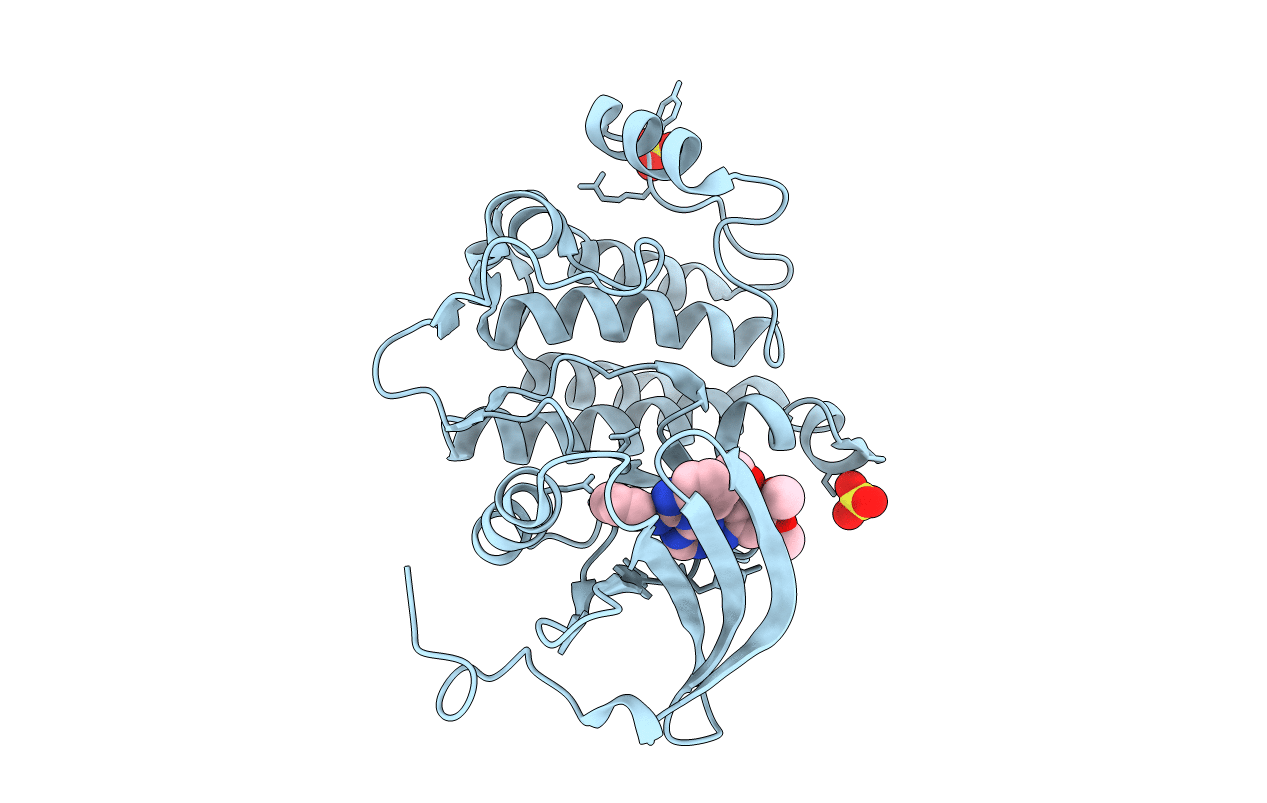
Deposition Date
2008-01-16
Release Date
2008-09-16
Last Version Date
2024-10-30
Entry Detail
PDB ID:
3BYM
Keywords:
Title:
X-ray co-crystal structure aminobenzimidazole triazine 1 bound to Lck
Biological Source:
Source Organism:
Homo sapiens (Taxon ID: 9606)
Host Organism:
Method Details:
Experimental Method:
Resolution:
2.00 Å
R-Value Free:
0.27
R-Value Work:
0.22
Space Group:
P 21 21 21


